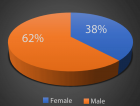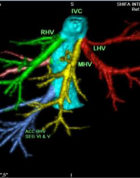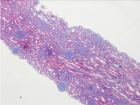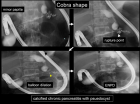Abstract
Mini Review
Ethno-Medicinal Plants from the North-Central Western Ghats of India for Alternative Health Care
Pramod J Hurkadale* and Chaitrali M Bidikar
Published: 14 August, 2023 | Volume 7 - Issue 2 | Pages: 076-080
Ethnomedicine, synonymous with traditional medicine, is a crucial healthcare system practiced by various ethnic groups worldwide, especially among those with limited access to modern Western medicine. This study explores the rich bio-cultural diversity of the North Central Western Ghats in Karnataka, India, which harbors diverse ethnomedicinal practices. The region's tropical forests are home to an extensive array of plant species, with over 600 endemic to southern India and 95 exclusively endemic to Karnataka. The research focuses on documenting and analyzing the traditional knowledge of local communities regarding the use of plants for treating various human diseases. However, this task presents significant challenges and requires collaborative efforts from the government, NGOs, and Herbal Drug Companies. Over the last decade, ethnomedicinal studies have seen a rise, but there is still limited understanding of ethnomedicine's role in the traditional healthcare system in India. The forests of North Central Western Ghats, including Agumbe, Arbail Ghat, Chorla Betta, and others, exhibit a combination of deciduous and evergreen vegetation. These forests hold a variety of medicinal plants, adding to the region's bio-cultural richness. Scientific validation of the locally used ethnomedicinal plants further supports the development of herbal drug formulations with the support of the Ministry of Ayush, enabling the conservation and sustainable utilization of threatened and endangered species. The study emphasizes the importance of preserving traditional healers' knowledge and promoting collaboration for the preservation of ethnomedicinal practices in the region.
Read Full Article HTML DOI: 10.29328/journal.jpsp.1001109 Cite this Article Read Full Article PDF
Keywords:
Ethnomedicine; Ethnomedicinal practices; Traditional medicine; Bio-cultural diversity; Herbal drug formulations; Conservation; Sustainable utilization
References
- Acharya D, Shrivastava A. Indigenous herbal medicines: Tribal formulations and traditional herbal practices. Aavishkar Publishers Distributor. 2008.
- Bennett BC, Prance GT. Introduced plants in the indigenous pharmacopoeia of Northern South America. Economic Botany. 2000; 54(1): 90-102.
- Byg A, Balslev H. Diversity and use of palms in Zahamena, eastern Madagascar. Biodiversity and Conservation. 2001; 10(6): 951-970.
- Vandebroek I, Calewaert JB, De Jonckheere S, Sanca S, Semo L, Van Damme P, De Kimpe N. Use of medicinal plants and pharmaceuticals by indigenous communities in the Bolivian Andes and Amazon. Bulletin of the World Health Organization. 2008; 86(10): 759-760.
- Fabricant DS, Farnsworth NR. The value of plants used in traditional medicine for drug discovery. Environ Health Perspect. 2001 Mar;109 Suppl 1(Suppl 1):69-75. doi: 10.1289/ehp.01109s169. PMID: 11250806; PMCID: PMC1240543.
- Hamilton AC. Medicinal plants, conservation and livelihoods. Biodiversity & Conservation. 13(8): 1477-1517.
- Heinrich M, Gibbons S. Ethnopharmacology in drug discovery: an analysis of its role and potential contribution. J Pharm Pharmacol. 2001 Apr;53(4):425-32. doi: 10.1211/0022357011775712. PMID: 11341358.
- Kumar V, Dangi KS, Bhatt PC, Kumar V. Ethnomedicinal plants of Shankaracharya Hill, Srinagar, Jammu and Kashmir, India. Asian Journal of Traditional Medicines. 2010; 5(2): 75-85.
- Prance GT. Ethnobotany in the Neotropics: A research agenda. Journal of Ethnobiology. 1991; 11(1): 1-7.
- Schippmann U, Leaman DJ, Cunningham AB. Impact of cultivation and gathering of medicinal plants on biodiversity: Global trends and issues. CBD Technical Series. 2002; 6: 1-54.
- Sharma U, Kumar N, Kumar P. Ethnomedicinal plants used by the villagers of district Udhampur, Jammu, and Kashmir, India. International Journal of Pharmacy and Pharmaceutical Sciences. 2012; 4(1): 262-265.
- Vishnu MV, Mishra A. Ethnobotany and Medicinal Plant Traditions of Adi Tribe of Dehang-Debang Biosphere Reserve, Arunachal Pradesh, India. 2011.
- Ladio AH, Lozada M. Nontimber forest product use in two human populations from northwest Patagonia: A quantitative approach. Human Ecology. 2003; 31(1): 89-104.
- Volpato G, Godínez D, Beyra A, Barreto A, González J, Beltrán M. The importance of a comparative study of traditional botany and medical ethnobotany in Latin America. Boletín Latinoamericano y del Caribe de Plantas Medicinales y Aromáticas. 2009; 8(5): 287-300.
- Zent S, López-Zent E. Ethnobotanical convergence, divergence, and change among the Hotï of the Venezuelan Guayana. Journal of Anthropological Research. 2004; 60(2): 179202.
- Balick MJ, Cox PA. Plants, people, and culture: The science of ethnobotany. Scientific American Library. 1996.
- Jain SK. Dictionary of Indian Folk Medicine and Ethnobotany. Deep Publications. 1991.
- Millennium Ecosystem Assessment (2005) Ecosystems and human well-being: Biodiversity synthesis. World Resources Institute.
- Patwardhan B, Vaidya AD, Chorghade M, Joshi SP. Reverse pharmacology and systems approaches for drug discovery and development. Current Bioinformatics. 2004; 2(4): 357-376.
- Vandebroek I, Balick MJ, Yukes J. Medicinal plants used for urinary problems in Belize. Journal of Ethnopharmacology. 2011; 137(3): 1256-1276.
- World Health Organization (WHO) (2002) Traditional medicine strategy 2002–2005. WHO.
- Joshi P, Dhawan V. Indigenous drugs and liver diseases. Indian Journal of Pharmacology. 2010; 42(2): 128.
- Srivastava S, Lal K, Pant D. Traditional medicinal plant knowledge among the rural communities of western Himalaya. Indian Journal of Traditional Knowledge. 2016; 15(1): 9-17.
- Thomas E, Vandebroek I, Sanca S, Van Damme P. Cultural significance of medicinal plant families and species among Quechua farmers in Apillapampa, Bolivia. J Ethnopharmacol. 2009 Feb 25;122(1):60-7. doi: 10.1016/j.jep.2008.11.021. Epub 2008 Dec 3. PMID: 19101618.
- Vandebroek I, Van Damme P, Van Puyvelde L. Arranging the “Big Picture”: Ethnobotanical Classification of Plant Use in Indigenous Tribes and Afro-Brazilians of Northeast Brazil. Journal of Ethnobiology and Ethnomedicine. 2009; 5(1): 8.
- Zent S, Zent EL. The evolution of traditional ecological knowledge: Aspects of the ethnobotany of the Piaroa and their neighbors in the Orinoco basin. In Time and complexity in historical ecology. Columbia University Press. 2007; 207-232.
- Bussmann RW, Sharon D. Traditional medicinal plant use in Northern Peru: Tracking two thousand years of healing culture. 2006.
- Khan AV, Ahmed QU, Mir SR, Kumar S. Ethnobotanical and ethnomedicinal studies in Balochistan. 2014.
- Ladio AH, Lozada M. Nontimber forest product use in two human populations from northwest Patagonia: A quantitative approach. 2003.
- Leonti M, Casu L, Sanna F. Biodiversity studies and ex-situ conservation of medicinal plants: Ethical issues. 2009.
- Mahawar MM, Jaroli DP. Traditional knowledge on zootherapeutic uses by the Saharia tribe of Rajasthan, India. 2007.
- Quave CL, Pieroni A. A reservoir of ethnobotanical knowledge informs resilient food security and health strategies in the Balkans. 2015.
- Samy RP, Gopalakrishnakone P, Ignacimuthu S, Pavadai E, Raja DP. Ethnobotanical survey of folk plants for the treatment of snakebites in Southern part of Tamilnadu, India. 2008.
- Singh S, Singh RS. Traditional uses of medicinal plants in Darbhanga District, Bihar, India. 2014.
- Teklehaymanot T, Giday M. Ethnobotanical study of medicinal plants used by people in Zegie Peninsula, Northwestern Ethiopia. 2010.
- Yunus M, Rahman MM, Chowdhury JU. Ethnomedicinal survey of various communities residing in Garo hills of Durgapur, Bangladesh. International Journal of Natural Product Science. 4(5): 13-20.
- Rastogi S, Kulshreshtha DK, Rawat AK, Mehrotra S.. New phenylpropanoid esters from Boerhaavia diffusa. Journal of Natural Products. 1197. 60(4): 373-375.
- Schultes RE. The conservation of ethnobotanical resources in the tropical forest of Latin America. In Biodiversity II Springer, Boston, MA. 1990; 803-811.
- Vogl CR, Vogl-Lukasser B, Cabanes G. Ethnobotanical research in home gardens of small farmers in the Alpine region of Osttirol (Austria): An example of biocultural evolution in Europe. Journal of Ethnobiology and Ethnomedicine. 13(1): 1-22.
- Wiersema JH, León B. World economic plants: A standard reference. CRC Press. 1999.
- Yineger H, Kelbessa E, Bekele T. L-tryptophan: A potential panacea for harmful cyanobacterial blooms in the Ethiopian highland freshwaters. Ethiopian Journal of Biological Sciences. 2008; 7(1): 51-64.
Similar Articles
-
Phytochemical and pharmacological properties of Jatropha dioicaDiana Isela Araujo-Espino,Blanca Patricia Lazalde-Ramos*,Ana Lourdes Zamora-Perez. Phytochemical and pharmacological properties of Jatropha dioica. . 2023 doi: 10.29328/journal.jpsp.1001098; 7: 010-013
-
Conservation Threats to Ethnomedicinal plants in Kore District, South Eastern, EthiopiaSelamawit Nega*, Agete Jerena, Mesfin Boja. Conservation Threats to Ethnomedicinal plants in Kore District, South Eastern, Ethiopia. . 2023 doi: 10.29328/journal.jpsp.1001108; 7: 069-075
-
Ethno-Medicinal Plants from the North-Central Western Ghats of India for Alternative Health CarePramod J Hurkadale*, Chaitrali M Bidikar. Ethno-Medicinal Plants from the North-Central Western Ghats of India for Alternative Health Care. . 2023 doi: 10.29328/journal.jpsp.1001109; 7: 076-080
-
Assessment of Indigenous Knowledge on Using of Traditional Medicinal Plants to Cure Human Diseases in South Omo Zone Baka Dawla Ari District, Kure and Bitsmal South EthiopiaGizaw Bejigo*. Assessment of Indigenous Knowledge on Using of Traditional Medicinal Plants to Cure Human Diseases in South Omo Zone Baka Dawla Ari District, Kure and Bitsmal South Ethiopia. . 2024 doi: 10.29328/journal.jpsp.1001132; 8: 048-054
-
Potential of Herbarium-based Phenological Studies to Predict the Climate Change ImpactsKailash S Gaira*, OK Belwal, ID Bhatt. Potential of Herbarium-based Phenological Studies to Predict the Climate Change Impacts. . 2024 doi: 10.29328/journal.jpsp.1001141; 8: 110-112
Recently Viewed
-
Texture of Thin Films of Aluminum Nitride Produced by Magnetron SputteringStrunin Vladimir Ivanovich,Baranova Larisa Vasilievna*,Baisova Bibigul Tulegenovna. Texture of Thin Films of Aluminum Nitride Produced by Magnetron Sputtering. Int J Phys Res Appl. 2025: doi: 10.29328/journal.ijpra.1001106; 8: 013-016
-
Prevalence and Correlation between HbA1c Control and Duration of Diabetes with Blindness in the Eastern Part of Libya: Double Centers StudyKhalid AK Elmajri*, Abdolmejed Fathy. Prevalence and Correlation between HbA1c Control and Duration of Diabetes with Blindness in the Eastern Part of Libya: Double Centers Study. Int J Clin Exp Ophthalmol. 2024: doi: 10.29328/journal.ijceo.1001058; 8: 021-025
-
Reliability and Diagnostic Performance of Transient Hepatic Elastography in Chronic Hepatitis C during the Training PhaseAppel F*, Ercolin S, Monteiro MM, Lomes N, Uehara S, Emori CT, Nunes EJS, El Bacha I, Oliveira AC, Feldner ACCA, Silva ISS, Silva AEB, Ferraz MLG, Parise ER, Carvalho-Filho RJ. Reliability and Diagnostic Performance of Transient Hepatic Elastography in Chronic Hepatitis C during the Training Phase. Ann Clin Gastroenterol Hepatol. 2024: doi: 10.29328/journal.acgh.1001047; 8: 021-027
-
Budesonide – Oral Galenic Formulations for Crohn DiseaseLuisetto M, Mashori GR, Cabianca L, Latyshev OYU. Budesonide – Oral Galenic Formulations for Crohn Disease. Ann Clin Gastroenterol Hepatol. 2024: doi: 10.29328/journal.acgh.1001048; 8: 028-033
-
Drug Rehabilitation Centre-based Survey on Drug Dependence in District Shimla Himachal PradeshKanishka Saini,Palak Sharma,Bhawna Sharma*,Atul Kumar Dubey,Muskan Bhatnoo,Prajkta Thakur,Vanshika Chandel,Ritika Sinha. Drug Rehabilitation Centre-based Survey on Drug Dependence in District Shimla Himachal Pradesh. J Addict Ther Res. 2025: doi: 10.29328/journal.jatr.1001032; 9: 001-006
Most Viewed
-
Evaluation of Biostimulants Based on Recovered Protein Hydrolysates from Animal By-products as Plant Growth EnhancersH Pérez-Aguilar*, M Lacruz-Asaro, F Arán-Ais. Evaluation of Biostimulants Based on Recovered Protein Hydrolysates from Animal By-products as Plant Growth Enhancers. J Plant Sci Phytopathol. 2023 doi: 10.29328/journal.jpsp.1001104; 7: 042-047
-
Sinonasal Myxoma Extending into the Orbit in a 4-Year Old: A Case PresentationJulian A Purrinos*, Ramzi Younis. Sinonasal Myxoma Extending into the Orbit in a 4-Year Old: A Case Presentation. Arch Case Rep. 2024 doi: 10.29328/journal.acr.1001099; 8: 075-077
-
Feasibility study of magnetic sensing for detecting single-neuron action potentialsDenis Tonini,Kai Wu,Renata Saha,Jian-Ping Wang*. Feasibility study of magnetic sensing for detecting single-neuron action potentials. Ann Biomed Sci Eng. 2022 doi: 10.29328/journal.abse.1001018; 6: 019-029
-
Pediatric Dysgerminoma: Unveiling a Rare Ovarian TumorFaten Limaiem*, Khalil Saffar, Ahmed Halouani. Pediatric Dysgerminoma: Unveiling a Rare Ovarian Tumor. Arch Case Rep. 2024 doi: 10.29328/journal.acr.1001087; 8: 010-013
-
Physical activity can change the physiological and psychological circumstances during COVID-19 pandemic: A narrative reviewKhashayar Maroufi*. Physical activity can change the physiological and psychological circumstances during COVID-19 pandemic: A narrative review. J Sports Med Ther. 2021 doi: 10.29328/journal.jsmt.1001051; 6: 001-007

HSPI: We're glad you're here. Please click "create a new Query" if you are a new visitor to our website and need further information from us.
If you are already a member of our network and need to keep track of any developments regarding a question you have already submitted, click "take me to my Query."
















































































































































